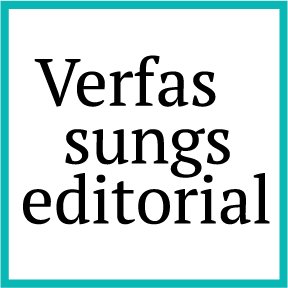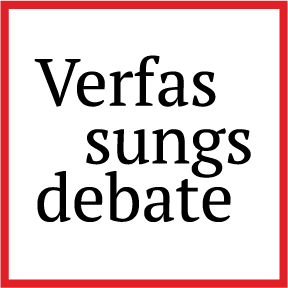Whose Values?
Rethinking the Use of Values in EU Law Through the CJEU’s “Feminist” Asylum Cases
Value-based reasoning features prominently in CJEU case law. The most recent example is AG Ćapeta’s opinion in Commission v. Hungary. While AG Ćapeta finds an infringement of Article 2 TEU on the ground that “disrespect and marginalisation of a group [LGBTQI+ people in this case] in a society are the ‘red lines’ imposed by the values of equality, human dignity and respect for human rights” (para. 262), this commitment to equality appears in contrast to how values are mobilised in asylum law. Especially gender and sexuality-based claims are often subject to selective scrutiny driven by cultural stereotyping and value-based conditionality. This tension thus reveals a deeper ambiguity in the legal politics of values in the EU: what is treated as absolute (“red line”) within the Union turns flexible and conditional in cases concerning asylum, integration, as well as anti-discrimination.
A closer look at the “feminist” cases (WS, K and L, and AH and FN) reveals how “Western values”-centred reasoning is deployed at the Member State level and re-elaborated by the CJEU as the fundamental value of gender equality. The EU Agency for Asylum (EUAA) recently hailed the feminist asylum case law as bringing “increased clarity” to the assessment of women seeking international protection. Yet it is precisely this claim of clarity that we wish to challenge: we argue that value-based reasoning risks opening the door to ideological reinterpretations and, as Saniya Amraoui recently observed, to othering.
While we will not dive into the vast debates in legal philosophy about values in law, we build on the acknowledgement that we are dealing with complex and contested grounds. In what follows, we question what this might reveal about the broader legal and political landscape in which asylum, identity, and human rights intersect.
The “feminist” case law
Recent CJEU rulings mark a shift toward a more gender-sensitive interpretation of EU asylum law. In WS, the Court recognised that gender-based violence, even in the private sphere, can constitute persecution. It confirmed that women may qualify as a “particular social group” in line with the Istanbul Convention and CEDAW. This reasoning was extended in K and L, where the Court considered whether two Iraqi teenage girls could be granted protection because they had internalised the value of “gender equality” during their time in the Netherlands. The Court accepted this identification with gender equality as a defining group characteristic, implicitly tying refugee protection to value alignment and lifestyle. Finally, in AH and FN, the Court held that all women in Afghanistan, facing systematic oppression under the Taliban regime, may qualify as a particular social group, without requiring individualised proof of persecution. This decision confirmed that structural discrimination and denial of basic rights can meet the threshold of persecution.
While these cases have been welcomed as a feminist turn, and while it is true that the Court recognised the need for gender sensitivity when dealing with the question of persecution, one aspect has not gained as much attention: the judicial classification of “Western values” or, as the Court calls it, the fundamental value of gender equality. This is not to downplay the significance of recent judicial developments – we fully acknowledge the importance of the efforts to advance more gender-sensitive and intersectional interpretations of migration and asylum law. However, these gains have come at the cost of a continued othering process of asylum seekers’ countries (and societies) of origin.
In K and L (para. 63), the CJEU held that
“it is for the referring court to ascertain, in particular, whether the applicants in the main proceedings genuinely identify with the fundamental value of equality between women and men […] by seeking to benefit from that equality in their daily lives, with the result that that value constitutes an integral part of their identity and whether, as a result, they would be perceived as being different by the surrounding society in their country of origin”.
In light of this, we must ask: is this truly a victory for feminism?
No need for values in refugee law cases
Arguably, what complicates adjudication in these cases is the tension between the regimes of refugee law and human rights law. As AG de la Tour has addressed it in AH and FN (paras. 51-53) and WS (paras. 1-3), this tension relates to the problem posed by dealing with acts of persecution (gender-based violence in these cases) which are both protected by (international and European) human rights standards and systematically occurring across EU Member States. In principle, Article 78(1) TFEU resolves this tension by requiring international law to be considered when interpreting EU law. The EU Qualification Directive (2011/95/EU) must be interpreted in line with the 1951 Geneva Refugee Convention, as guided by UNHCR documents, as well as key human rights treaties such as CEDAW and the Istanbul Convention. These instruments collectively establish that gender-based violence and discrimination constitute serious human rights violations. Moreover, the UNHCR Guidelines explicitly recognise that women can be considered a particular social group under refugee law without the necessity to form distinctive groups of women (para. 30) – such as those believing in “Western values”. Similarly, CEDAW defines discrimination against women as any distinction, exclusion, or restriction based on sex that impairs or nullifies the enjoyment of rights and freedoms on a basis of equality with men, and obliges states to actively eliminate such discrimination through legal and structural reforms (Article 1), and the Istanbul Convention obliges states to recognise gender-based violence as a form of persecution (Article 60).
Why has the notion of “Western values” become entrenched in the jurisprudence and administration of several Member States, although EU asylum law does not require an assessment of such values? For example, Germany, Austria, and the Netherlands have adopted narrow interpretations of the category “particular social group” when it comes to women. Instead of recognising women as a group per se – a conclusion that the CJEU has deemed legitimate in AH and FN when dealing with Afghan women under the Taliban regime – courts often require further specification. Accordingly, women only qualify if they fall into subcategories like “single women without male protection” or “Westernised women”.
Since the protection from gender-based persecution is universally recognised, irrespective of cultural identity, lifestyle, or adherence to so-called Western values, we would expect courts not to frame asylum claims through the lens of the “belief” in fundamental values (AG Collins Opinion in K and L, para. 29), but to focus on the core principles of equality, self-determination, and protection from persecution. What is the risk of taking the first path?
Lessons from queer asylum cases
Queer asylum jurisprudence and scholarship offer valuable insights into the risks of selective protection. It is particularly relevant to look into two cases, X, Y and Z (2013) and A, B and C (2014), in which the Court was faced with the task of interpreting EU asylum law in the case of asylum applications based on sexual orientation and gender identity (SOGI).
The Court clarified three main issues: first, to qualify as members of a particular social group, applicants need to satisfy both an internal requirement (identifying with the social group) and an external requirement (performing a distinctive trait of their membership) (X, Y and Z, para. 45). Second, the Court rejected the so-called discretion reasoning, namely the set of legal techniques deployed by asylum authorities to refuse international protection on the grounds that applicants could be discreet and thus conceal the characteristics that expose them to the risk of persecution (X, Y and Z, para. 71). Third, while it excluded the possibility of deciding on an application exclusively on the basis of culturally shaped stereotypes, the Court did not rule out that these can indeed play a role in the individual assessment (A, B and C, para. 62).
Building on this case law, a growing body of scholarship on queer asylum claims identifies three key lessons.
First, Sabine Jansen and Thomas Spijkerboer as well as Carmelo Danisi, Moira Dustin, Nuno Ferreira, and Nina Held demonstrate in their empirical studies on the SOGI asylum claims across Europe that credibility assessments are heavily influenced by stereotypes and dependent on European conceptions of LGBTIQ+ identities, experiences, behaviours, and affects. These include, for instance, expectations regarding LGBTIQ+ applicants’ ability to articulate their psychological and emotional path of self-discovery and coming out or assumptions about their feelings of shame or their exclusion from families and communities.
Second, as Janna Wessels shows, the cumulative criteria for the determination of particular social groups subject applicants to “double binds” whereby they are “damned if they do and damned if they don’t” (p. 44): applicants must perform an identity convincingly enough to be believed, but risk being disbelieved if that performance is deemed inauthentic, strategically exaggerated or unfit for a culturally specific conception of emancipation. One example is found in the Austrian court’s decision in AH and FN (prior to the CJEU referral): while that court imposed on the applicants the requirement to prove their adoption of a Western lifestyle in order to access protection, it also disbelieved them inasmuch as it found that such lifestyle had not “become such an essential part of their identity that it was impossible for them to renounce it in order to escape the threat of persecution in their country of origin” (AH and FN, para. 23).
Third, while the ruling out of discretion has given way to a heightened scrutiny of credibility if not a general attitude of disbelief (see Jenni Millbank), discretion reasoning cannot be fully eliminated since it is “the site where the extent of the Convention grounds is negotiated in refugee law” (Wessels, p. 35).
Understanding the implications of value-based arguments
When it comes to the “feminist” cases under examination, the most compelling insight from queer asylum literature concerns the role of the discretion and credibility requirements in the Court’s reasoning. In K and L, for instance, the Court accepts, as a ground of persecution, the applicant’s membership of a particular social group to be defined by the internalised belief in gender equality as enshrined in Article 2 TEU and “absorbed” during their stay in an EU Member State (para. 34). By focusing on “particular social group” rather than, for example, on “religion” or “political opinion” – as suggested by the Dutch referring judge (para. 27) – and by insisting on the cumulative elements of internal identification and external recognisability, the Court puts applicants in a vulnerable position: the focus shifts away from the persecutor and the risk of persecution, and instead centres on the persecuted’s acts and identities – ultimately making them responsible for proving their entitlement to protection (Wessels, pp. 38, 40). Second, the Court establishes a threshold of genuine, effective identification with all the components of gender equality as set by international legal instruments (K and L, paras. 37-44) in order to fulfil the internal requirement. In so doing, the Court imposes such a high burden of proof on applicants that they are consequently exposed to the risk of stereotyped credibility assessments. This mirrors, we argue, the “double binds” documented in queer asylum cases.
The Opinion in K and L by AG Collins further demonstrates that constructing women identifying with gender equality as a particular social group is problematic. Collins rightly rejects the East-West binary proposed by the referring court because it “perpetrates a false dichotomy that constitutes part of a divisive dialogue” (para. 18). However, he later reifies this very division by suggesting that it is “plausible” that the applicants, “in contrast to their peers in Iraq”, had so “accepted and absorbed” the belief in gender equality that it became “a part of their character” (para. 40). By framing it this way, AG Collins not only ties eligibility for protection to a perceived value alignment, but also exclusively associates the possibility of “absorbing” that value to growing on European territory. What emerges, then, is a troubling paradox: value-based reasoning, even when it appears to support progressive outcomes, undermines the universality and legal clarity of refugee law provisions. By grounding protection in applicants’ supposed internalisation of certain values, courts risk opening the door to ideological reinterpretations that may ultimately undermine international protection altogether.
Connecting the dots
This purported feminist evolution in case law is steering refugee protection away from its core purpose: to protect individuals that suffer serious human rights violations regardless of cultural adaption. It unduly shifts the attention from the persecutor to the persecuted, centres the individual assessment on the applicants’ internalisation of abstract values, understood in a Eurocentric way, and thereby reproduces the same double binds identified in queer asylum cases. Protection becomes conditional not on risk or need, but on demonstrable assimilation into a culturally preferred model of identity based on exclusionary conceptions of “European” values.
To be clear: values are constitutive of legal systems. They acquire meaning through codification, interpretation, and institutional practice. However, relying on value-based arguments in legal reasoning carries significant risks. First, it blurs the line between normative clarity and moral abstraction, creating legal uncertainty and unpredictability. Second, values can be selectively instrumentalised – even more so when framed through the lens of “Western” ideals. As such, we see that values often function as contested tools, deployed to shape or limit access to individual rights.
To serve justice rather than power, values must be legally defined, procedurally constrained, and subject to democratic scrutiny. In pluralistic societies committed to the rule of law, this calls for critical awareness, legal precision, and democratic reflection.
We therefore call for a broader, more deliberate debate about the role that values play in European law: How are they defined? Who determines them? And how do they interact with the legal principles meant to ensure equality before the law?



